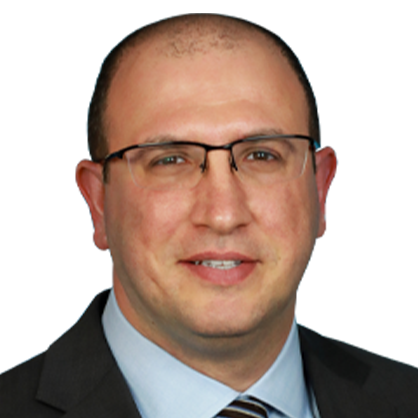
Hospital Medicine Q&A
with Rodolphe Taby, MD
Scalable approaches that prioritize acute patient care while achieving strategic goals.
Streamlined management and virtual care solutions to maximize efficiency.
Intensivist staffing and management, leveraging technology for quality care.
Solutions to align and integrate processes and understanding across departments.
Leverage technology to expand coverage & support both in and outside of the hospital.
Engaging with patients for proactive planning and preventative health.
 Featured
Featured
Right now, in hospital medicine, there is an issue with recovery. Our specialty was hit hard during the COVID pandemic. For the longest time, the pandemic created an environment that demanded less focus and less emphasis on some of the usual performance metrics that you typically monitor HM departments by. Instead, everyone was focused on how to accommodate the volume and how to accommodate the acuity, and to do that, they had to let go of a focus on some of the efficiencies that have been the pillars of hospital medicine practices.
As the pandemic abated, hospital administrators immediately went back to monitoring those efficiencies, but from a clinician perspective, there has been a delay in going back to that environment, to that mode and getting out of the reality that developed during COVID. As clinicians, we aren’t back with the focus on the coordination and quality of care, the focus on efficiencies and throughput that existed before COVID. From a perspective standpoint, hospitalists are still focusing on the accommodation of acuity and volume rather than a returned emphasis on throughput and efficiencies.
Hospital medicine as a specialty is still looking to solidify our place in the health care system in both scope and scale. There are many conversations happening right now asking, “Where does hospital medicine begin and end? Does it go into the ED? Into the ICU? Does it stop at the door of the hospital, or does it go beyond?” There are also discussions regarding the scale and utilization of hospital medicine across hospitals and acute care facilities – we must continue to demonstrate the value proposition through converging financial and operational efficiencies with the same or better quality of care.
The entire industry as a whole is underperforming and struggling from a financial perspective, and hospital medicine is not isolated from that. There is pressure on hospitalists to perform, but there is a lack of hospital medicine awareness, emphasis, and involvement in overall industry advocacy that is limiting our ability to participate in shaping the solution.
Initially, hospital medicine started as an individualized endeavor. A physician, a PCP, goes to the hospital, rounds on their patients, then goes back to the clinic, sees their patients there, and at the end of the day, goes back to the hospital and rounds on their patients again.
As the next step in care delivery, we then moved to the physician-nurse dyad model, so it was rounding on patients accompanied by the charge nurse or by an individual nurse. That eventually moved into the care team model. This happened at the same time that we started having multi-disciplinary and interdisciplinary rounds.
In the care team model, someone has to coordinate or quarterback for the whole team, in order to make sure that, one, improve the patient experience by closing communication loops, and, two, that the throughput of the patients in the care continuum is as efficient and as appropriate from a care delivery standpoint as possible.
Hospital medicine has been tasked to be the coordinator and the quarterback for the entire care team.
It is crucial for hospitalists to integrate well with all of the subspecialties, but particularly with the emergency medicine department. Hospital medicine care delivery starts in the emergency department. It doesn’t start on the floors, it starts in the emergency department.
When hospitalists get called for an admission, they go and see the patient inside the emergency department so there’s no interruption in the care continuum. This idea of hospital medicine care delivery starting in the emergency department is corroborated by a substantial amount of data that shows that LOS in the emergency department is linked to overall mortality, it’s linked to overall LOS, it’s linked to morbidity, and it’s linked to hospital complications.
This concept is even more important as holds in the emergency department and inefficiencies in the emergency department have started becoming more apparent. Around 90% of hospital admissions come through the emergency department, we know that in order for an emergency department to be well functioning, it cannot have a substantial amount of inpatient holds.
Hospital medicine plays the largest role in facilitating the throughput of patients to the floors, into the inpatient wards, and to the ICUs, ensuring they are able to receive timely, quality care while simultaneously decompressing the ED and allowing them to accept the incoming patients seeking emergent care.
There are three different aims and objectives for the utilization of NPs and PAs in hospital medicine.
NP/PA practice has always been and needs to continue to be in a very collaborative approach with collaborating and supervising physicians and it has to adhere to all the local, facility, and state regulatory requirements and credentialing/bylaws requirements as well as a rigorous adherence to the scopes of practice defined by the facilities and the states.
Advocacy will allow hospital medicine to play a crucial role in determining the future of inpatient care and will allow hospital medicine to be an equal partner with other subspecialties in shaping patient care.
Hospital medicine will be able, through advocacy, to move from a solely academic subspecialty into a subspecialty that looks at the entire continuum of care and focuses not only on delivering highly skilled quality care to acutely ill patients but also to participating in the health of the community and the health of the industry and health care systems.
I think what excites me the most is the recognition by the industry as a whole and by the health systems in particular, of how crucial HM performance is to their quality and continuum of care and overall performance, how tied their overall financial, operational, and clinical sustainability is to their hospital medicine departments and the hospital medicine specialty as a whole.
Finally, there is recognition that a hospital cannot be successful in its operations without a well-operated, well-managed, and well-recruited hospital medicine dept.
That recognition gives hospital medicine a platform to leverage its position within the care continuum and position within the health system and the industry in order to advance concepts such as post discharge care, appropriate next site of care, adequacy of inpatient vs outpatient procedures and services.
Having that platform and recognition, and being able to see where our specialty can meaningfully impact change is very exciting.
Innovation in hospital medicine has to focus on reevaluating, reimagining, and redefining concepts that have been long standing across our specialty. Concepts such as shift based scheduling, duration and timing of shifts, allocation of AM census, and concepts that relook at where hospital medicine care delivery happens – not just at the bedside in the hospital but also at home, in the ED, in skilled nursing facilities, Acute Rehabs, LTACs, pre-op clinics, post-discharge clinics, urgent cares, cardiac rehab, pulmonary rehab, and more.
Innovation must look at how hospital medicine functions within the hospital system and at the scope of the hospital medicine specialty. Will it be limited to and confined within the four walls of the hospital? Or will it extend beyond that into the pre-hospitalization and post-hospitalization spaces?
The best patient care is delivered when every hospital patient is being cared for and followed by a hospital medicine clinician, not in an exclusive manner, but rather in an inclusive, collaborative care team setting.
There is an opportunity for hospitalists to be involved in many spaces and settings that have been historically restricted to outpatient providers or other subspecialties and innovation in hospital medicine will play a key role in seizing that opportunity.